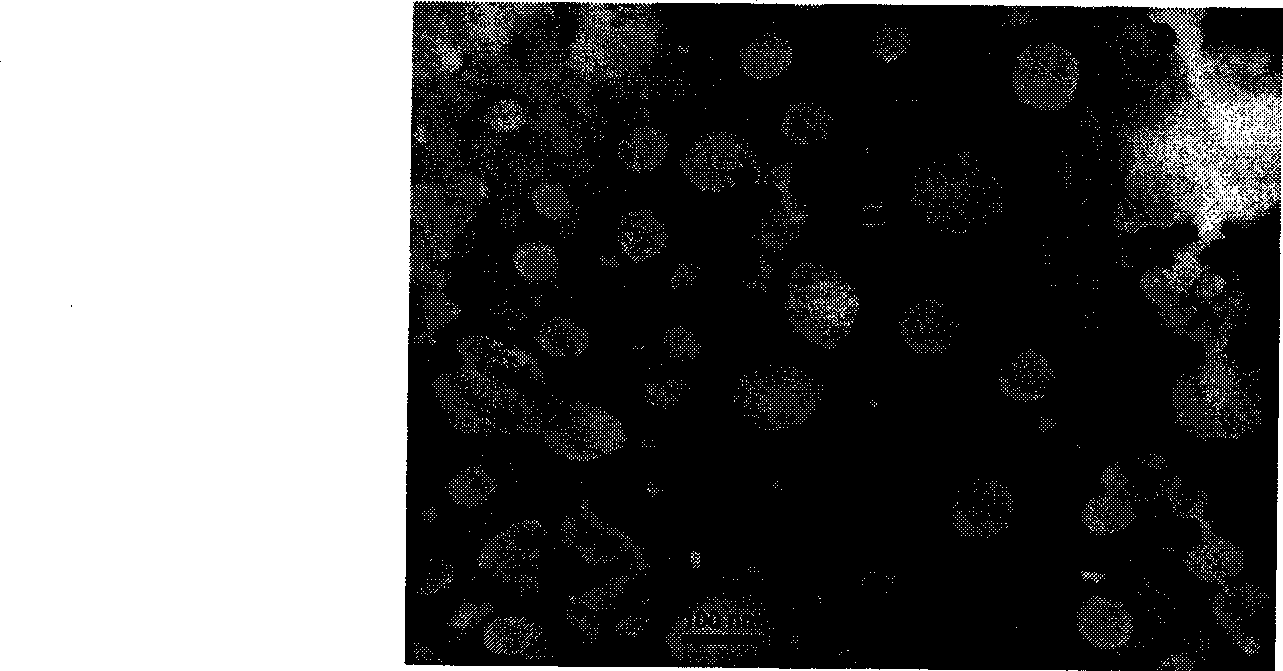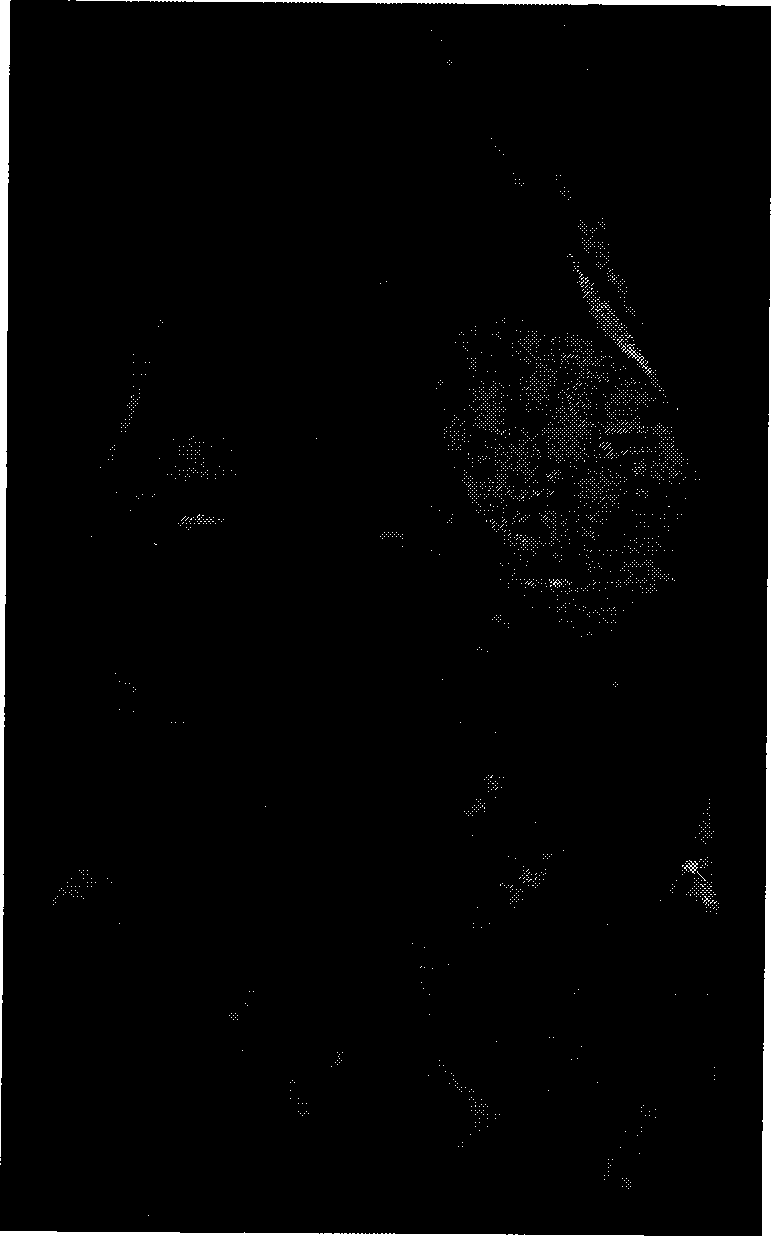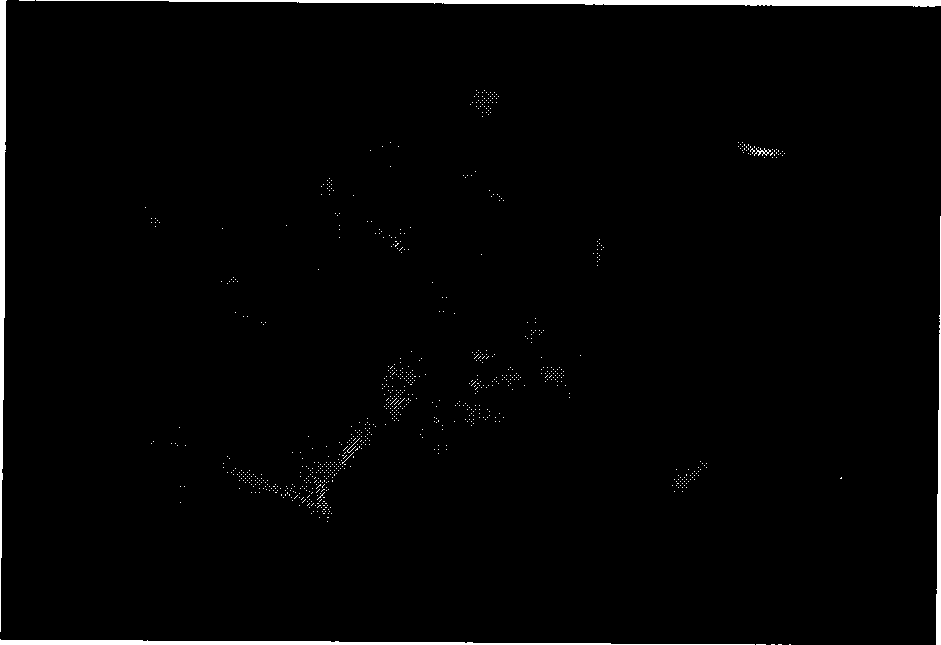Lipid nano granule containing magnetic resonance contrast agent as well as preparation method and use thereof
A magnetic resonance contrast agent and lipid nanoparticle technology, which is applied in the directions of MRI/MRI contrast agent, emulsion delivery, drug delivery, etc., can solve the problem of distinguishing intestinal contents, low detection rate of small lesions, Difficulty and other problems to achieve the effect of improving the encapsulation rate
- Summary
- Abstract
- Description
- Claims
- Application Information
AI Technical Summary
Problems solved by technology
Method used
Image
Examples
Embodiment 1~3
[0023] Embodiments 1-3 are related to the preparation method of loaded Gd-DTPA lipid nanoparticles
Embodiment 1
[0024] Embodiment 1: Preparation of loaded Gd-DTPA lipid nanoparticles
[0025] Weigh 200mg of Span-80 and dissolve in 10mL of n-hexane to form the organic phase of the emulsion; in addition, weigh the prescription amount of Gd-DTPA and 18mg of Tween-80 recorded in Table 1, dissolve in 1mL of distilled water to form the aqueous phase . Under the stirring condition of 400rpm, the aqueous phase is added in the organic phase to form a water-in-oil (W / O) microemulsion; 50 mg of the glycerol monostearate and lecithin mixture of the recipe amount are weighed and dissolved in 1 mL of absolute ethanol, The solution was quickly poured into 11 mL of W / O microemulsion, and stirred continuously for 5 min at room temperature to obtain a lipid nanoparticle dispersion system. The dispersion system was centrifuged at a high speed of 20000rpm to separate the precipitated lipid nanoparticles, washed the precipitated lipid nanoparticles twice with 2mL of n-hexane, and dispersed the precipitated...
Embodiment 2
[0028] Example 2: Investigation of the physicochemical properties of the loaded Gd-DTPA lipid nanoparticles (note: the consistency of the effect and the weight 4 ratio)
[0029]Take an appropriate amount of the lipid nanoparticle dispersion prepared above, dilute it 20 times with 0.1% poloxamer solution, and measure its particle size and surface potential with a 3000HS particle size and surface potential analyzer.
[0030] The encapsulation efficiency of Gd-DTPA in nanoparticles was determined and calculated by indirect method. Nanoparticles are prepared as described above, the lipid nanoparticle dispersion is centrifuged after adding hydrochloric acid flocculation, the supernatant is collected, and the fluorescence spectrophotometry (Ex=495nm, Em=514nm, Slit=5nm) measures the fluorescence value I 1 , calculate the amount of free Gd-DTPA in the solution; Calculate the encapsulation efficiency of fluorescent graft by (1) formula:
[0031]
[0032] Gd-DTPA drug loading is ca...
PUM
 Login to View More
Login to View More Abstract
Description
Claims
Application Information
 Login to View More
Login to View More - R&D
- Intellectual Property
- Life Sciences
- Materials
- Tech Scout
- Unparalleled Data Quality
- Higher Quality Content
- 60% Fewer Hallucinations
Browse by: Latest US Patents, China's latest patents, Technical Efficacy Thesaurus, Application Domain, Technology Topic, Popular Technical Reports.
© 2025 PatSnap. All rights reserved.Legal|Privacy policy|Modern Slavery Act Transparency Statement|Sitemap|About US| Contact US: help@patsnap.com



